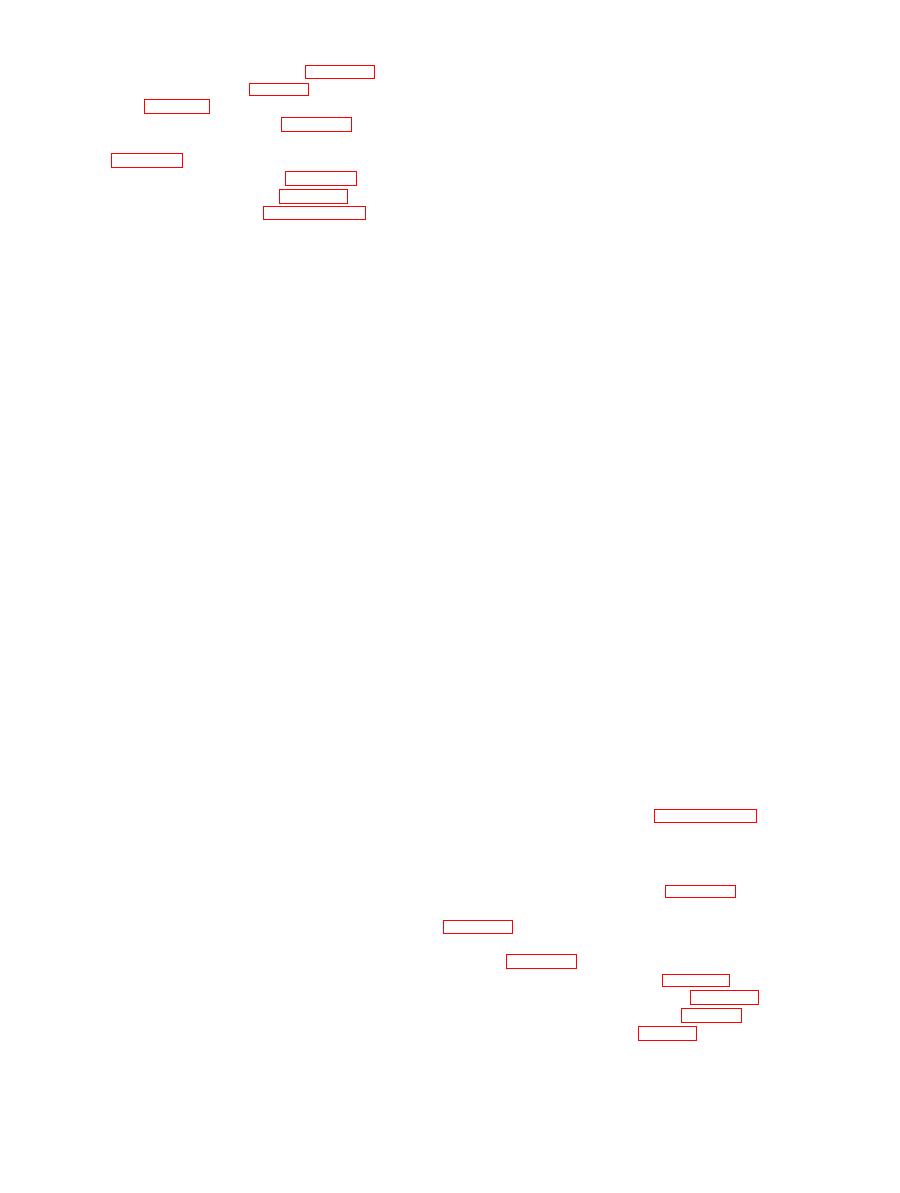 |
|||
|
|
|||
|
Page Title:
Cleaning, Inspection, and Repair. |
|
||
| ||||||||||
|
|
 foot-pounds torque. Caps are numbered to
(2) Remove the cylinder head (para 3-19).
correspond with their respective positions in the
(3) Remove the blower (para 3-5) and blower
block. The number of the front and rear main
drive support (para 3-6).
bearing caps is stamped on the face of the oil pan
(4) Remove the crankshaft (para 3-33).
mounting flange of the cylinder block, adjacent to
(5) Remove the camshaft balancer shaft and
their permanent location in the engine as
bearings (para 3-30).
e s t a b l i s h e d at the time of manufacture. The
(6) Remove piston and rod (para 3-26).
number 1 cylinder and main bearing cap are always
(7) Remove the idler gear (para 3-31).
located at the end opposite the flywheel end of the
c. Disassembly. Refer to figure 3-93 and
cylinder block, regardless of engine rotation. The
disassemble the cylinder block and end plates in
numerical sequence.
standard bearing bore diameter is 3.251 to 3.353
d. Cleaning, Inspection, and Repair.
inches.
(1) Clean cylinder block. First remove all
(b) Check cylinder liner counterbores for
plugs and scrape all old gaskets from the cylinder
squareness, proper depth, and diameter. Coun-
block as follows:
terbores should be from 4.825 to 4.835 inches in
(a) Thoroughly clean the cylinder block
diameter. Counterbored surfaces must be smooth
using live steam. During the cleaning, special
and square with the cylinder bore within 0.001 inch
attention should be paid to the oil galleries, air box
total indicator reading. The liner counterbore depth
floor, and air box drain openings. Jets machined in
should be from 0.300 to 0.302 inch and must not
camshaft and balance shaft bushing block bores
vary in depth more than 0.001 around the entire
permit oil to be sprayed on the cam followers and
circumference.
s h o u l d be checked to make sure they are not
(c) After inspection, if the cylinder block is
plugged. Use a 0.020 inch wire to clean the jets.
not going to be assembled for a temporary period of
(b) Dry cylinder block with compressed air.
time, spray the machined surfaces with engine oil.
(2) Pressure test cylinder block.
If the cylinder block is not going to be assembled
(a) Make sure the seal ring grooves in
for an extended period of time, spray or dip the
cylinder liner bore of block are clean. Then, install
block in a polar type rust preventive compound.
seal rings in the grooves.
Castings that are free of grease and oil will rust
(b) Apply light coating of vegetable type
immediately when exposed to atmosphere.
shortening or permanent type antifreeze solution to
(4) Inspection of end plates.
the inner diameter surface of seal ring in contact
(a) When the end plate is removed, it is
with cylinder liner.
essential that all of the old gasket material be
(c) Carefully slide liner into the cylinder
removed from both surfaces of the end plate and
block bore, and through seal rings being careful not
cleaned.
to roll or damage seal rings. Do not force. Hold the
(b) Check surfaces of the end plate for nicks,
liners in position with suitable metal plates bolted
dents, scratches, or score marks; also check end
to the top of the cylinder block. Tighten retaining
plate for flatness. Plug type nuts in the end plate
plate bolts sufficiently to hold liners in place.
should also be checked for cracks and damaged
threads. If nicks or scratches on the sealing surfaces
(d) Seal off the water inlet and outlet holes
airtight. This can be done by using plates and
of the end plate are too deep to be cleaned up, or the
suitable rubber gaskets held in place by bolts.
plug type nuts are damaged, the end plate or plug
(e) I m m e r s e t h e c y l i n d e r b l o c k f o r 2 0
nuts should be replaced.
minutes in tank of water heated to 180-200F.
e. Reassembly. Refer to figure 3-93 and
(f) Using a suitable fitting at one of the
r e a s s e m b l e the cylinder block and end plates.
water inlet or outlet openings, apply 15 pounds per
Reassembly is the reverse order of disassembly.
square inch air pressure to water jacket and observe
f. Installation.
water in the tank for bubbles indicating cracks or
(1) Install the crankshaft (para 3-33).
leaks.
(2) Install the piston and connecting rods
(g) Following the pressure test, blow out
passages with dry compressed air.
(3) Install the camshaft, balancer shaft and
(3) Inspect cylinder block. After cleaning and
bearings (para 3-30).
pressure testing, the cylinder block should be in-
(4) Install the idler gear (para 3-31).
spected as follows:
(5) Install the cylinder head (para 3-19).
(a) Check the main bearing bores. Check
(6) Install the blower drive (para 3-6).
b o r e inside diameter with main bearing caps
(7) Install the engine (para 2-9).
secured in place with bolts tightened to 120-130
3-106
|
|
Privacy Statement - Press Release - Copyright Information. - Contact Us |